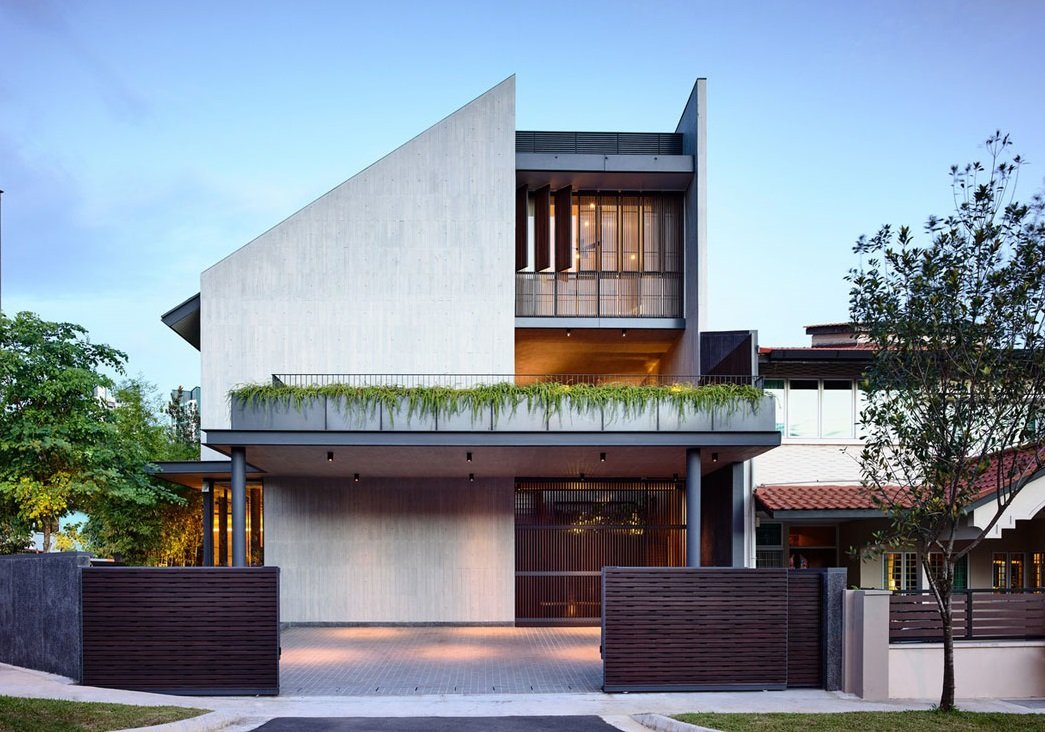#10315. Dynamic Asymmetrical Façade: Concrete and Wood in Contrast
Before us stands an expressive example of modern residential architecture featuring a distinctly asymmetrical façade. The dominant compositional element is the triangular volume of the second floor, executed in light concrete, which creates a dynamic silhouette and gives the building a recognizable character.
The façade demonstrates a masterful combination of various materials: monolithic concrete, wood, and glass. Particularly striking is the contrast between the massive concrete surfaces and the warmer wooden elements that soften the overall strictness of the composition. The vertical wooden louvers on the second floor serve not only a decorative purpose but also a functional one, regulating the light entering the interior spaces.
The horizontal guideline formed by the greenery-adorned terrace on the second level adds an ecological dimension to the building and serves as a natural transition between artificial and natural elements. The hanging plants soften the geometric rigidity of the architectural solution.
The lower level also features thoughtful detailing: a minimalist entrance with vertical wooden slats that echo the second-floor treatment, and elegant horizontal wooden fences that harmoniously complement the overall composition.
In designing one's own home, several techniques can be borrowed: the contrasting combination of materials with different textures (concrete/wood), the use of asymmetry to create a dynamic composition, the integration of greenery elements into the façade architecture, and the application of vertical louvers for both visual variety and sun protection.
